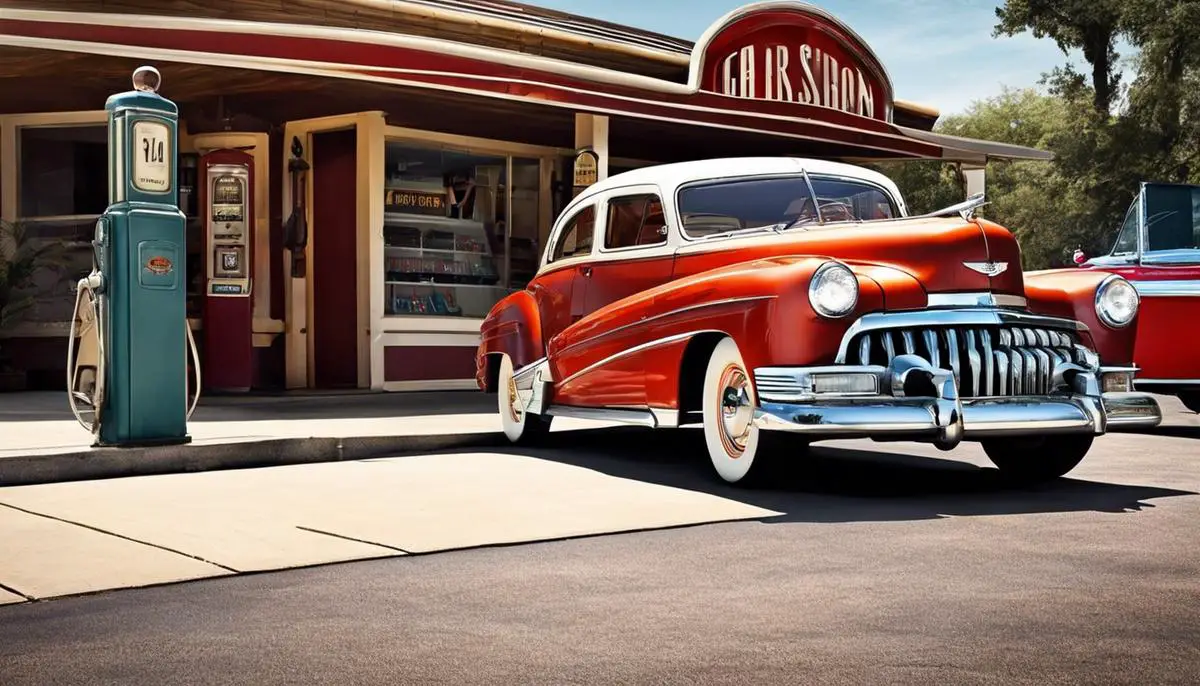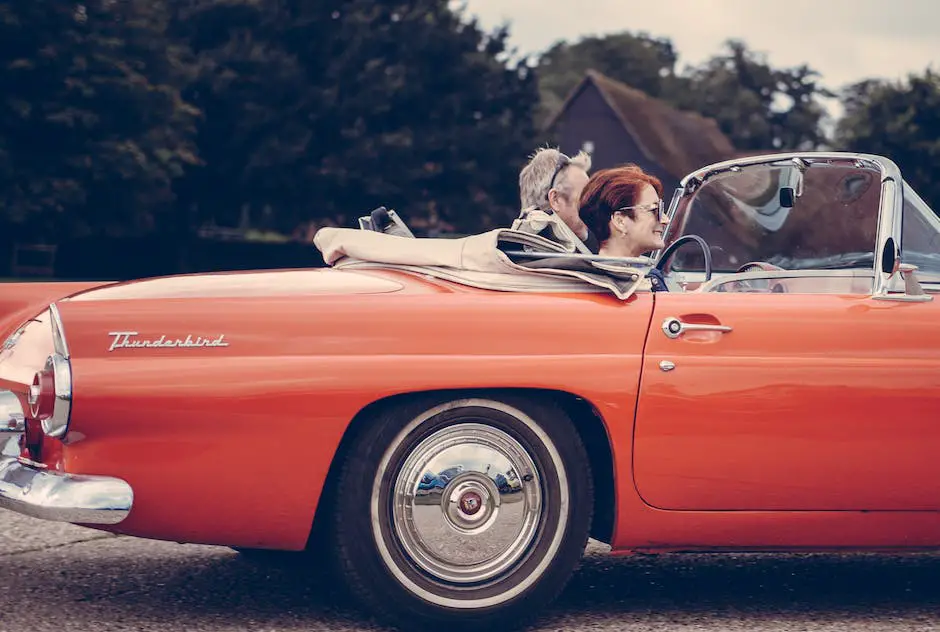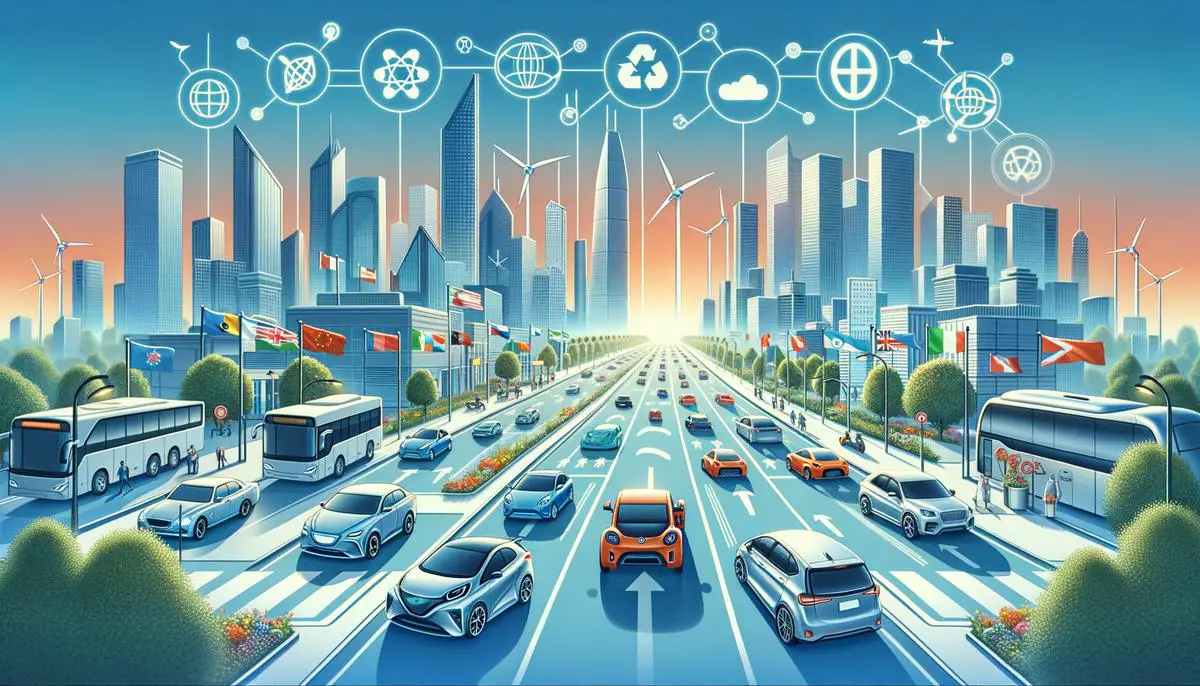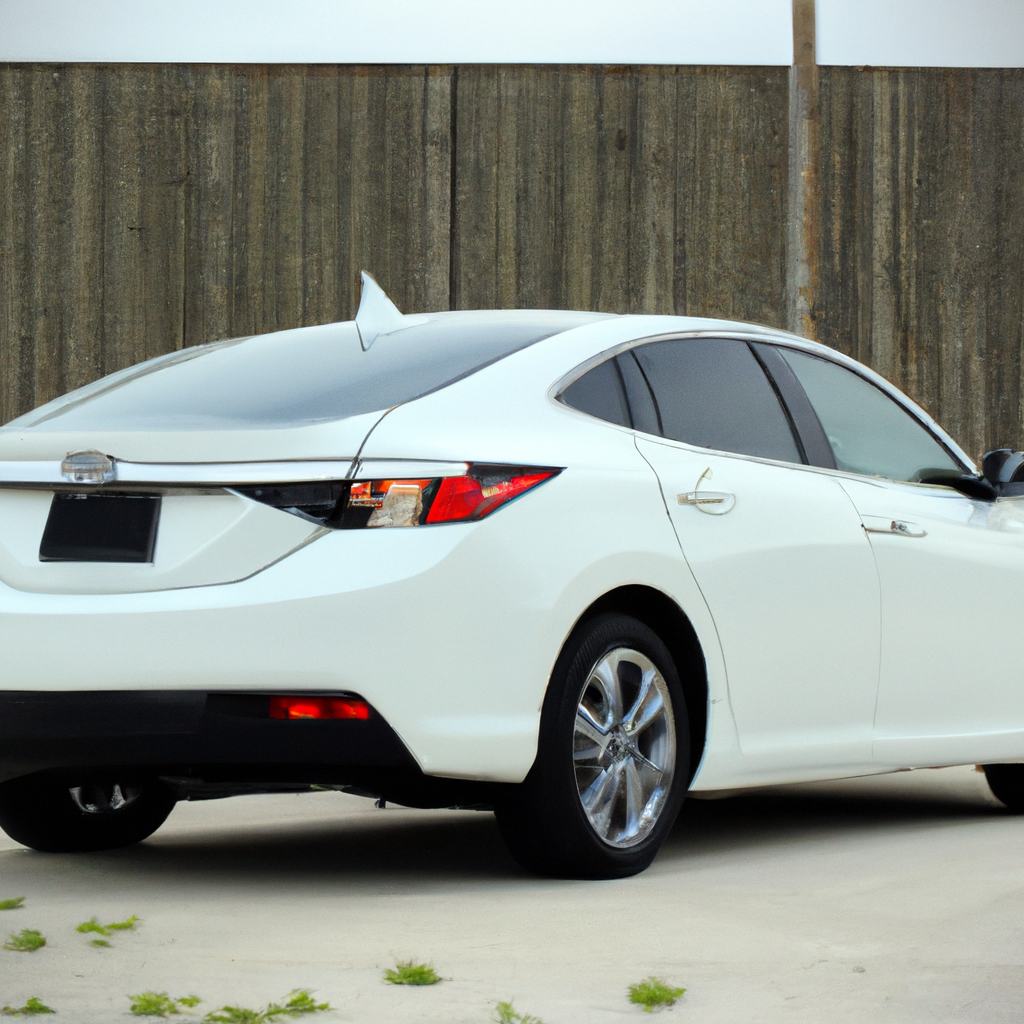Classic and timeless, vintage cars continue to ignite passion and capture the imagination of enthusiasts and collectors alike. Not only are they intriguing relics of automotive history, but they also serve as symbols of nostalgia, antiquity, rarity and exclusivity. With an artful blend of engineering and design, these four-wheeled wonders are embedded in our cultural fabric, exemplifying the inventive spirit of their respective eras. From the perspective of psychological appeal to their potential as astute investments, from the palpable impact of pop culture and media to the relative sustainability and environmental footprint, an exploration of the ongoing demand for vintage cars presents a fascinating journey into the heart of a persistent global phenomenon.
Contents
The Psychology Behind the Demand
The Enduring Love for Vintage Cars: A Closer Look
When it comes to automotive enthusiasm, vintage cars hold a distinctive place, captivating hearts worldwide with their timeless charm. But what is it about these classic vehicles that scores of folks simply can’t resist? Let’s explore this affable love affair with vintage cars.
Complexities hidden beneath the hood, the art of maintaining a piece of history, or the sheer joy of owning a unique piece of artistry are some reasons people are bewitched by vintage cars. Yet, this fascination isn’t limited to any particular demographic—aside from the age barrier, of course, as these cars and youths of today went parallel timelines.
First off, vintage cars serve as a beautiful echo of the past. Each chrome edge, bold color choice, and inventive design teleports us back to the era they originated from. These aren’t merely automobiles; they’re functioning, moving museums that showcase the evolution of mechanical design and social ideals.
Each vintage car harbors a story. It’s akin to a ticket back in time, allowing owners to revisit an era long gone. That ‘68 Mustang? It might have been someone’s pride and joy, taken on weekends to the movie theaters. A ‘72 Beetle? Even remembering the classic Beatles-era music seems like a delightful afternoon!
Collectors and aficionados gravitate to these classics for their undeniable character and heritage. Modern cars, while efficient, simply cannot compete with the unique aesthetics and personality that vintage autos possess. This charm lies in the palpable testament of time, which expresses itself in slight patina or a well-worn leather seat.
For oscillating gears, a hands-on approach creates a sense of accomplishment. Vintage cars demand regular care and maintenance, providing numerous learning opportunities along the way. Enthusiasts often find the act of reviving and preserving a historic piece of machinery thoroughly rewarding.
Lastly, vintage cars provide an unmatched element of exclusivity. Each model has a limited number produced, and as time passes, the number of surviving cars dwindles. This scarcity makes ownership of a classic car something particularly special, a treasure only a select few can boast.
All in all, vintage cars are much more than transport. They are direct connections to our past, echoing an era of fresh innovation and creative design. They symbolize a period where technology blossomed, civilities were evolving rapidly, and the open road was an invitation to new adventures.
So if you’re drawn to the allure of shiny chrome and nostalgia’s sweet scent, investing in a vintage car may be the journey of a lifetime waiting for you. Just remember, while all roads may lead to Rome, the one taken in a vintage car makes the travel itself an unparalleled experience.
Now shall we take that ageless beauty for a spin?

Understanding Rarity and Exclusivity
The Charm of Rarity and Exclusivity in Vintage Cars.
One of the pivotal aspects that fan the flames of vintage car admirers’ love for these antiquities is the rarity and exclusivity they offer. Unwrapping this interesting element gives us a broader perspective and a deeper understanding of why they are so coveted, and in frequent demand.
Since most vintage cars are no longer in production, their scarcity significantly increases their value. This limitation in availability bolsters the desirability of these automobiles, making them a much sought-after prize for collectors and enthusiasts alike. But what precisely does this rarity entail in the world of vintage cars?
As a rule, a lower production volume implies a higher rarity factor. For instance, limited edition models with only a handful of models ever produced often belong to the upper echelon of desirable vintage cars. The scarcity can also be due to factors like previously high demand or loss in accidents, making surviving models exceptionally rare. Simply put, a hard-to-find car model appeals much more to a vintage car enthusiast because of the exclusivity it provides.
Exclusivity, on the other hand, goes beyond mere limited availability. It is not just about the number of vintage car models made but rather encompasses a wider realm including unique design elements, distinct features, or remarkable histories associated with specific car models. Special editions, custom-made models, or cars once owned by famous personalities, all add an extra layer of exclusivity, adding further to their allure.
Take, for instance, vintage cars like the 1957 Ferrari 250 Testa Rossa or the 1962 Ferrari 250 GTO; they are celebrated not just for their rarity but also for their individuality. With sleek designs, unparalleled performance for their time, and ties to legendary race victories, these cars have etched themselves into automotive history, offering a level of exclusivity that fans relish.
That sense of exclusivity extends to the social sphere too. Owning a vintage car, especially a rare or exclusive one, confers a unique prestige upon the owner, setting them apart from run-of-the-mill car owners. It signals an appreciation for classic artistry, an understanding of automotive history, and dedication to maintaining these motoring masterpieces. As a result, these owners find themselves in an exclusive club, bound by shared knowledge and passion for the vintage automobile’s splendor.
In conclusion, the rarity and exclusivity of vintage cars are vital elements that contribute heavily towards their widespread demand. They bring a sense of individuality, history, and prestige that contemporary cars often cannot replicate. Hence, to many, owning a vintage car is not just about possessing an old vehicle; it is about preserving a piece of history, embracing uniqueness, and relishing a class apart.

The Investment Perspective
Why Vintage Cars Are a Worthwhile Asset
Ever wondered why vintage cars are often looked upon as a wise investment? This fixation goes beyond the vehicular aesthetics, distinctive design elements, and charm that we previously discussed. As we delve deeper into the subject, one’s perspective about these mechanical classic beauties might transform from just collectibles or passion-driven purchases into financial assets.
One fundamental reason vintage cars are viewed as a financial asset is their innate ability to increase in value over time. Unlike their contemporary counterparts that depreciate the minute they’re driven off the showroom floor, vintage cars are the complete opposite. The value of these retro head-turners tends to appreciate, given they are kept in good condition.
Potent car enthusiasts understand the pricing trends and the industry’s pattern, and hence, investing in the right vintage car at the right time can potentially yield considerable profits down the line. Factors such as the rarity of the model, its story or history, and the demand in the current market all contribute to its fluctuating value.
Additionally, part of the allure is the social prestige attached to owning these timeless pieces of machinery. A vintage car is not just a means of transportation but rather a statement, a representation of the owner’s taste, style, and social class. This factor indirectly contributes to the high value of vintage cars, making them more than just a purchase but a symbol of status and taste.
Now, let’s not forget the unique design elements that vintage cars carry. Today’s automobiles mostly follow a uniform blueprint, making way for economy and efficiency. Yet, each vintage model was a design marvel in its own right, boasting distinctive features and design elements that are hard to come by in modern vehicles. These noteworthy characteristics often become primary drivers for increased demand and, consequently, value.
Similarly, the distinctive histories associated with specific models, whether cinematographic fame, race-winning performances, or a previous celebrity owner, can significantly increase the value of a vintage car. The richer the backstory, the higher the emotional value and perhaps the price tag!
However, perhaps the most tangible allure of vintage car ownership lies in its exclusivity and rarity. With each passing year, the population of these cars dwindles due to various reasons, ranging from damage to disuse. This natural thinning of numbers creates a scarcity that automatically boosts the value of the remaining examples.
Moreover, vintage cars speak of an era where craftsmanship and customization reigned supreme. These pieces on wheels are reminders of a time where individuality rather than mass-production was celebrated, preserving, and owning a piece of these bygone days carries a different kind of sentiment and joy. Plus, there’s also the uniqueness factor. No two vintage cars are ever completely identical, not just aesthetically but mechanically too, making each a standalone masterpiece!
So, with their steadily increasing value and the added layers of social cachet, unique design elements, car-specific histories, and exclusivity, it’s no wonder vintage cars make a sound investment. Not to mention, the pure joy and satisfaction they bring to their owners are, in fact, priceless!

Impact of Pop Culture and Media
Pop culture and media indisputably have a significant influence on the enduring demand for vintage cars.
This fascination often arises from the glamour and prestige associated with these classic pieces of machinery tied to iconic figures and essential moments in film and television.
It’s undeniable there’s something particularly exciting about seeing a striking vintage automobile on the big screen, piloted by a beloved actor during a high-speed chase or polished to perfection as it glides along a red carpet.
Classic movies and TV shows have long immortalized certain vintage models.
Take the DeLorean DMC-12 from the “Back to the Future” series, the 1968 Mustang GT from “Bullitt,” or the 1970 Dodge Charger from the “Fast and Furious” franchise, for example.
These models, among others, have found a place in the collective memory thanks to their on-screen performances, igniting an enduring passion for vintage cars in many.
And it’s not just the visual appeal of these vehicles on TV or in movies.
Pop music has played a role in fueling vintage car cravings too.
Music videos and song lyrics often glorify the thrill of cruising in a bygone model down a sun-drenched highway.
Moreover, news and media can fuel interest in vintage cars by showcasing high profile auctions or discussing notable trends in the vintage car market.
When reports surface of a rare classic car being sold for millions, it creates chatter and can inspire an elevated interest in more casual fans of vintage cars.
Media and pop culture can also foster a kind of tribalism among vintage car enthusiasts.
Sharing the love for the same vintage models seen in movies, TV, or music can evoke a sense of community.
It enhances the feeling of exclusivity and belonging, just as much as being the owner of a vintage car does.
Just as important is the role social media plays in promoting interest in vintage cars.
Platforms like Instagram and Pinterest teem with evocative images of vintage cars, inviting aspirational fan bases to share and trade information.
Additionally, restoration blogs and video tutorials on platforms such as YouTube can empower an altogether new generation of vintage car lovers to pursue this unique passion.
In conclusion, pop culture and media contribute significantly to the allure of vintage cars.
The exposure provided by film, television, music, news, and social media imparts a real sense of charisma that these classic cars carry, augmenting the sense of nostalgia and grandeur that’s always been part of their charm.
As long as there’s media to showcase them, the appeal of vintage cars is unlikely to wane.

The Sustainability Aspect and Environmental Impact
An interesting and often overlooked facet of vintage car ownership relates to the principles of sustainability. More than just relics from past generations, vintage cars can also contribute to more sustainable living habits, making them even more attractive to environmentally-conscious enthusiasts.
One aspect of vintage car sustainability is the reduced environmental footprint accompanying their preservation. The production of a new car creates significant greenhouse emissions. In contrast, the maintenance of a vintage car, already manufactured decades ago, contributes far less to our carbon footprint. Indeed, there’s an eco-friendly charm to conservation over consumption.
Another factor leading to the rising demand for vintage cars is their inherent recyclability. Vintage cars tend to have been built with materials more durable and reusable than those found in modern vehicles. Whether it’s to replace parts, restore vehicles, or entirely recondition a decades-old car, the experience of breathing life back into these machines underlines an ethos of recycling and re-use, two cornerstones of sustainability.
Moreover, the values that come with vintage car ownership, such as repair over replacement, promote responsible consumption. The availability and required exchange of spare parts in the vintage car community indirectly fuels a vibrant, circular economy. This system significantly diminishes waste, seeing old parts transferred from one owner to another rather than heading straight to the landfill.
Engaging in the restoration process of vintage cars, for many, is a most rewarding endeavor. It both revives assorted skills and promotes sustainability through repurposing and refurbishing. This ties with the growing concern over the ‘throwaway culture’ associated with short-lived modern gadgets, boosting vintage cars’ appeal as a sustainable hobby option.
Manufacturing new cars involves extracting and processing natural resources, which significantly harms the environment. Conversely, when you restore or maintain a vintage car, no new resources are needed. This feature represents another crucial drawcard for those who value sustainability.
The longevity of vintage cars also supports their popularity. These cars were often built to last, known for their long lifespans and durability, making them prime examples of long-term sustainable goods. Their continued use keeps them away from junkyards, mitigating the environmental impact linked to waste disposal.
Furthermore, vintage cars often require less frequent use, primarily serving as weekend treats. As such, they don’t contribute to daily traffic or air pollutants, aligning with an eco-friendly lifestyle.
Interestingly, the simple mechanics of vintage cars provide a unique sustainability bonus: they are less dependent on the electronics that pervade current models. This quality enables owners to effect most repairs themselves, avoiding the carbon-intensive logistics associated with modern vehicle servicing.
Undeniably, the concept of vintage car ownership aligns with sustainability principles on several fronts. These classic beauties cater to our fascination with the past and our commitment to a greener today. The link between vintage cars and sustainability is continually strengthening, fueling their demand while supporting the health of our planet.

Ultimately, the enduring allure of vintage cars can be attributed to an engaging blend of emotional connections, investment potential, pop culture influence, and increasingly, environmental considerations. These cars represent much more than just vehicles; they are story-filled artifacts of history, mechanical embodiments of nostalgia, and in some cases, rare art pieces that appreciate over time. In the rapid pace of our disposable culture, the slow, thoughtful process of preserving and restoring these classics also aligns with a broader shift towards sustainability, giving them renewed relevance in today’s world. The high demand for vintage cars, therefore, is not merely about their mechanical aspects, but just as much about the narratives, traditions, and values they symbolize.



